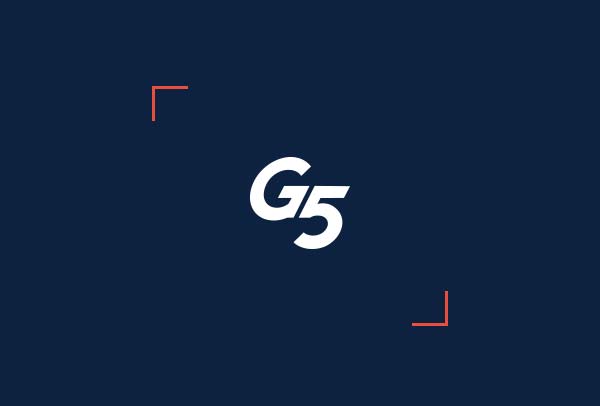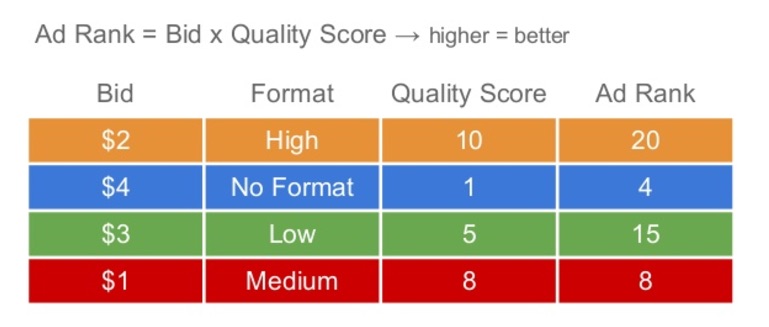
What the Recent Google Ad Rank Threshold Changes Mean for Real Estate Digital Marketers
In its pursuit of a better user experience, Google recently decided to escalate the importance of user search intent when deciding Ad Rank thresholds. Which means, the more you understand about your target personas, and their intent, the more likely you are to show up in their search results. Let’s take a deep dive on what is going on with these changes.
First, let’s start with some definitions, I’ve bolded some key terms below, their definitions follow:
Ad Rank is what Google uses to determine where search ads will appear on a SERP (search engine results page). Ad Rank is calculated by combining your Quality Score (expected CTR, ad relevance, landing page experience), the max CPC you are willing to pay, and the expected impact of ad extensions and ad formats. An Ad Rank threshold is the minimum Ad Rank an advertisement needs to have in order to show up in a certain area of the SERP (i.e. the top of the first page). Generally, Ad Rank thresholds are higher as you get closer to the top of the SERP. Ad Rank thresholds can also vary depending on other factors like geography or device type.
Here’s a quick visual reminder of how Ad Rank is currently calculated:

Google has changed the formula for calculating these Ad Rank thresholds. As a result, there are a couple of new rules to keep in mind:
1. The decided intent and meaning of a search query impacts Ad Rank thresholds.
This means that depending on what the user is searching for, it could be harder to place an ad at the top of the SERP. If a user is searching for recent news, Ad Rank thresholds are likely to be higher, resulting in fewer ads showing up on the first page of the SERP. And, logically this makes sense. If someone is searching for “news” it’s not often they want to “purchase” anything. They just want to read an article. On the flip-side, for a search query that is product-focused, Ad Rank thresholds will be relatively lower. This means when users are searching for products, it will be relatively less expensive to place ads at the top of page, and there will be more ads on these types of SERPs.
2. Your bid can carry more weight depending on the search query
As an Ad Rank threshold changes, depending on the type of query, the importance of max CPC in determining Ad Rank will change too. Going forward, your bid will be more important for certain search queries. Quality Score will still often be an important factor in calculating Ad Rank, but in many cases its importance will be diminished. Advertisers will probably start to see an increase in CPCs for certain campaigns, even if their keyword Quality Scores remain high.
Stay Tuned….
As always, your G5 Digital Advertising Team stays ahead of the curve when Google makes changes to the ad auctions, and we’ve been monitoring large volumes of CPC data since the AdRank threshold change started rolling out in May. Our strategies have remained solid, and the G5 team has not detected a change in the average cost per click for search queries in the Real Estate vertical in the campaigns that we run on our client’s behalf.
Google is still releasing updates to the Ad Rank thresholds through the end of May. If you begin to see higher CPCs, check to see if your Quality Score has changed. If your Quality Score has stayed consistent for the affected campaigns, try experimenting with your Max CPC. There will no doubt be opportunities for many advertisers to capitalize on an increased importance of bids for certain queries.
To learn more about all that Google has done in the past and how it impacts your digital marketing efforts, you can read more here: https://g5website.wpengine.com/blog/?tag=digital-advertising
Get News, Articles & Updates in Your Inbox
Thank You for Your Interest
We will be in contact soon and look forward to learning more about you and your company. Based on your marketing challenges, we’ll discuss increasing visibility into your analytics and how to generate more and better leads so you can achieve your marketing goals.
In the meantime, we invite you to check out our checklist on website accessibility. Use this checklist to start assessing the baseline accessibility of your website.
Enjoy! We’ll be in touch very soon.
